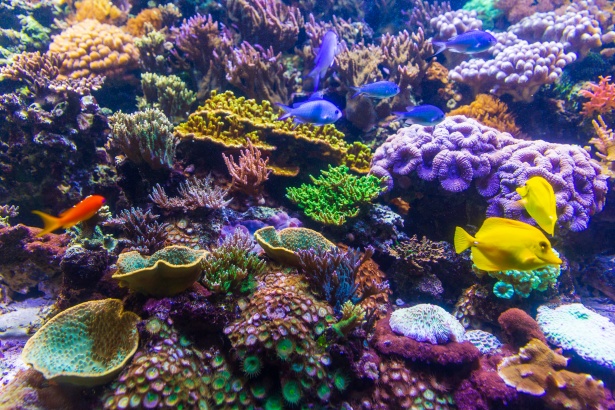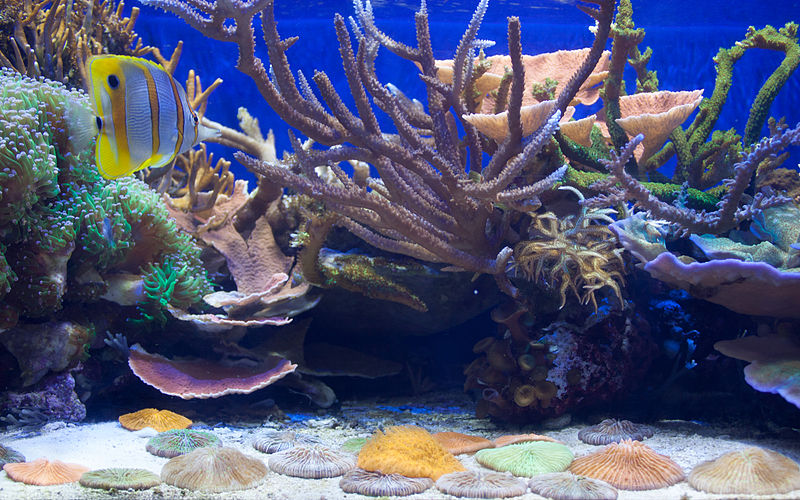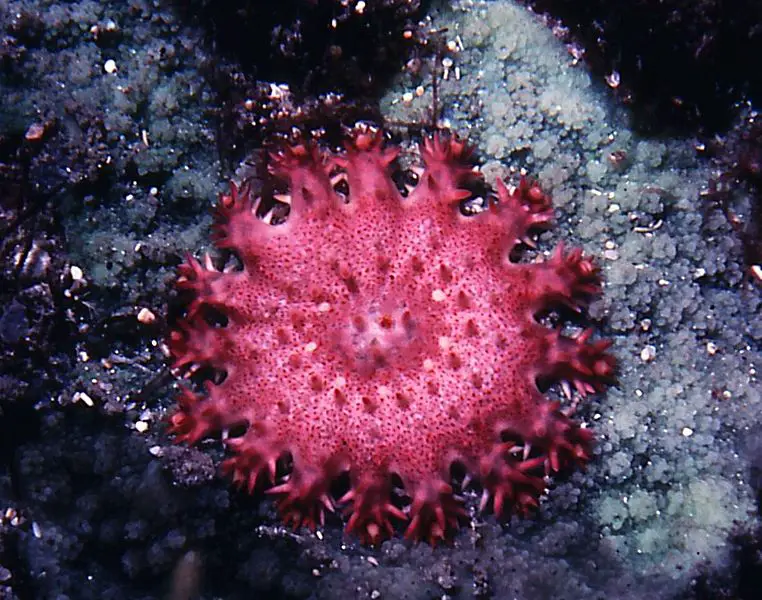Introduction
If you are setting up a reef tank or interested in marine aquariums – or even just interested in our beautiful oceans – you might be wondering how coral reefs form. What causes these extraordinary natural phenomena to exist?
Coral reefs are formed when coral larvae attach themselves to a suitable rock surface and start to grow there. They can form fringing reefs, atoll reefs, or barrier reefs. Fringing reefs grow out into the sea from the shore. Atoll reefs tend to be circular, with a lagoon in the center. Barrier reefs, like fringing reefs, grow along shorelines, but they are separated by more water.
Understanding how corals form and grow is important if you want to set up a tank yourself. Corals are living creatures and they need the right conditions if they are going to thrive. If you don’t have this understanding, your corals may struggle to attach and grow properly.
How Are Coral Reefs Made?
Coral reefs are quite complex structures. A reef initially forms when a coral larva settles on a rock or another suitable hard surface and attaches itself to the surface. Prior to this point, the larvae are free swimming, and many will never find a suitable rock.
Only “hard” corals can build reefs. Soft corals do not have the strength and structure, and will not grow in this way. Hard corals produce calcium carbonate that creates the structure and builds foundations for new baby corals to start growing on.
It takes a long time for these babies to establish themselves, and a new reef will only grow if the circumstances are very good and there are few local threats. Over the next few months, the corals will gradually start to grow and create a vibrant reef with many different kinds of corals and other organisms.
Reefs are made up of many organisms, even though corals are the foundation. Things like mollusks, sponges, algae, seaweed, sediment, and more will create the reef’s structure, building it up. As these creatures die, their remains further add to the reef, and new organisms grow in their place.
Wild coral reefs are obviously much more complex than the reef you might build in your tank, but understanding how they function and form is a good way to start learning how to create one yourself, and what will add to it.
What Does Coral Grow On?
Coral usually grows on rocks or other hard surfaces. In the sea, a coral larva is most likely to find purchase on a rock as these are the hardest available surfaces. However, in a tank, you can glue or attach a coral to almost any other surface, provided it is strong enough to offer an anchor point.
That means glass, rocks, or manmade decorations will usually be sufficient for forming an artificial coral reef.
What Are The 3 Types Of Coral?
Earlier, we mentioned the three types of coral reefs that exist. The first of these is the fringing reef. These form on the coasts of islands, cropping out from the rocks at the edge of the island, and growing into the sea. They are anchored against the shore, and slowly form outward from there. The first larva anchors itself on a shore-based rock.
Usually, fringing reefs are only separated from the shore by shallow lagoons or narrow inlets. They are coastal. These are the commonest kinds of reefs.
Next, there are barrier corals. These also relate to the coastline, but they are found further out to sea. They run parallel to the coast, instead of being in direct proximity. These reefs often reach as high as the surface of the water.
Their name comes from the fact that they are a “barrier” to navigation for ships, making it both difficult and dangerous for them to travel in these areas without good navigation equipment. Barrier reefs can be quite some way from the coast, but will still follow the line of the shore.
Finally, atoll reefs are rings of coral that are generally located far out at sea. These tend to form rings, with shallow, lagoon-like waters encased in the center. They can be havens for marine life of all different kinds. In general, they form when the sea level rises or nearby islands sink.
Some scientists recognize a fourth kind of coral reef, known as the patch reef. These rarely come as far as the surface of the water, and tend to remain submerged instead. They often form from the bottom of an island platform or from the continental shelf. They are not considered a major type of reef.
What Makes A Coral Reef?
Coral reefs are made up of thin layers of calcium carbonate. These are generated by hard corals, sometimes called stony corals, which secrete calcium carbonate as a form of protection and structure. Their polyps are sheltered inside the bony structures and kept safe by the tough exterior.
This tough exterior also provides a suitable space for more coral larvae to settle. They will attach to it, and begin building up layers of calcium carbonate themselves, adding new parts to the reef and expanding it outward. The existing coral polyps will reproduce, further expanding the reef.
Over time, the corals will secrete more and more calcium carbonate. As the layers build up, the reef grows in size, although this can take thousands of years. Many different kinds of coral can be found on a single reef, and these structures support a vast diversity of marine life.
It is thought that about a quarter of all marine life can be found on coral reefs, either as a permanent resident or as a visitor. The importance of these reefs cannot be overestimated.
Conclusion
Corals are formed when coral larvae find suitable spots in the ocean where they can settle. This is usually either on rocks or on existing coral formations. Once they have settled, they will start producing calcium carbonate as a means of protecting themselves from predators and the currents of the ocean, and this is the formation of a reef.



